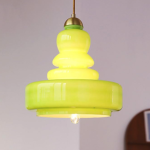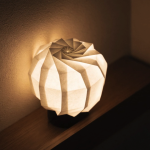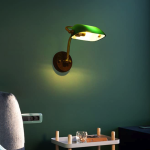Introduction
Low ceilings have been a part of architecture for centuries. They create a cozy and intimate atmosphere, especially in homes with traditional designs. However, low ceilings can also present challenges in terms of lighting, storage, and overall design. If you’re living in a home with low ceilings, don’t despair! With a little planning and creativity, you can make the most of your space and create a beautiful and functional living environment.
Challenges of Low Ceilings
While low ceilings can create a warm and inviting atmosphere, they can also present a number of challenges in terms of design and functionality. Some of these challenges include:
Limited Lighting Options
Low ceilings can make it difficult to install certain types of lighting, such as pendant or chandelier lighting. These types of fixtures may need to be installed at a lower height, which can make the room feel cramped and claustrophobic. To overcome this issue, consider installing flush-mounted or recessed lighting, which will sit flush with the ceiling and provide ample light without taking up valuable vertical space.
Lack of Storage Space
Low ceilings can limit the amount of storage space that you have in your home. Tall bookcases or storage units may not fit comfortably in a room with low ceilings, and you may be forced to limit the amount of furniture and decor that you can fit in a space. To make the most of your available storage space, consider installing built-in shelves or cabinets that sit flush against the walls. This will provide ample storage without taking up too much valuable floor space.
Limited Design Options
Decorating a room with low ceilings can be a challenge, as you may not have as many options when it comes to furniture and decor. Pieces with a low profile, such as sofas and chairs with low arms, can help to make a room with low ceilings feel more open and spacious. You may also want to consider vertical stripes or patterns on your wallpaper or curtains, as this can help to create the illusion of a higher ceiling.
Design Tips for Low Ceilings
While low ceilings can pose a number of challenges, there are also many design tips and tricks that can be used to make the most of your space. Some of these tips include:
Paint Your Ceiling the Same Color as Your Walls
Painting your ceiling the same color as your walls can help to create the illusion of a higher ceiling. This is because the eye will be drawn to the edges of the room, rather than to the height of the ceiling. When choosing a color for your walls and ceiling, opt for light and neutral shades, which will reflect light and make the room feel more open and spacious.
Use Vertical Stripes in Your Wallpaper or Curtains
Vertical stripes can help to create the illusion of a higher ceiling, as they draw the eye upwards. This can be achieved through the use of striped wallpaper or curtains. When choosing a wallpaper or curtain pattern, opt for thinner stripes, as these will create a more subtle effect.
Hang Curtains High
Hanging your curtains high can help to create the illusion of a higher ceiling. To achieve this effect, hang your curtains as high as possible, and make sure that they hang all the way to the floor. This will create a sense of height and will draw the eye upwards.
Use Low-Profile Furniture and Decor
Choosing low-profile furniture and decor can help to create the illusion of a higher ceiling. Opt for pieces with low arms and backs, as these will take up less vertical space. You may also want to consider using mirrors or other reflective surfaces, as these will help to bounce light around the room and make it feel more open and spacious.
Conclusion
Living with low ceilings can present a number of challenges, but with the right design tips and tricks, you can make the most of your space and create a beautiful and functional living area. By taking advantage of vertical space, using light and neutral colors, and choosing low-profile furniture and decor, you can make your home feel more open and inviting, even in rooms with low ceilings.






